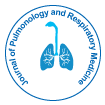Current Approaches in the Diagnosis and Management of Spontaneous Pneumothorax
Received Date: Dec 02, 2024 / Published Date: Dec 31, 2024
Abstract
Spontaneous pneumothorax (SP) is a clinical condition characterized by the sudden accumulation of air in the pleural space without any traumatic injury. It is commonly seen in young, tall, and thin individuals and is associated with significant morbidity and potential mortality. This review aims to present the current approaches to diagnosing and managing spontaneous pneumothorax. Advances in imaging, particularly high-resolution computed tomography (HRCT), have enhanced the diagnostic accuracy of SP. Management strategies include conservative observation, oxygen therapy, needle aspiration, and surgical interventions, depending on the severity and recurrence of the condition. The choice of treatment is often influenced by factors such as the patient’s clinical status, pneumothorax size, and recurrence history. In recurrent cases, video-assisted thoracoscopic surgery (VATS) or pleurodesis is often recommended. Recent literature underscores the importance of personalized management plans, integrating both medical and surgical interventions. Early recognition and appropriate intervention can reduce complications and improve patient outcomes.
Citation: Mansa K (2024) Current Approaches in the Diagnosis and Management of Spontaneous Pneumothorax. J Pulm Res Dis 8: 230. Doi: 10.4172/jprd.1000230
Copyright: © 2024 Mansa K. This is an open-access article distributed under the terms of the Creative Commons Attribution License, which permits unrestricted use, distribution, and reproduction in any medium, provided the original author and source are credited.
Share This Article
Recommended Journals
Open Access Journals
Article Tools
Article Usage
- Total views: 255
- [From(publication date): 0-0 - Apr 02, 2025]
- Breakdown by view type
- HTML page views: 100
- PDF downloads: 155
